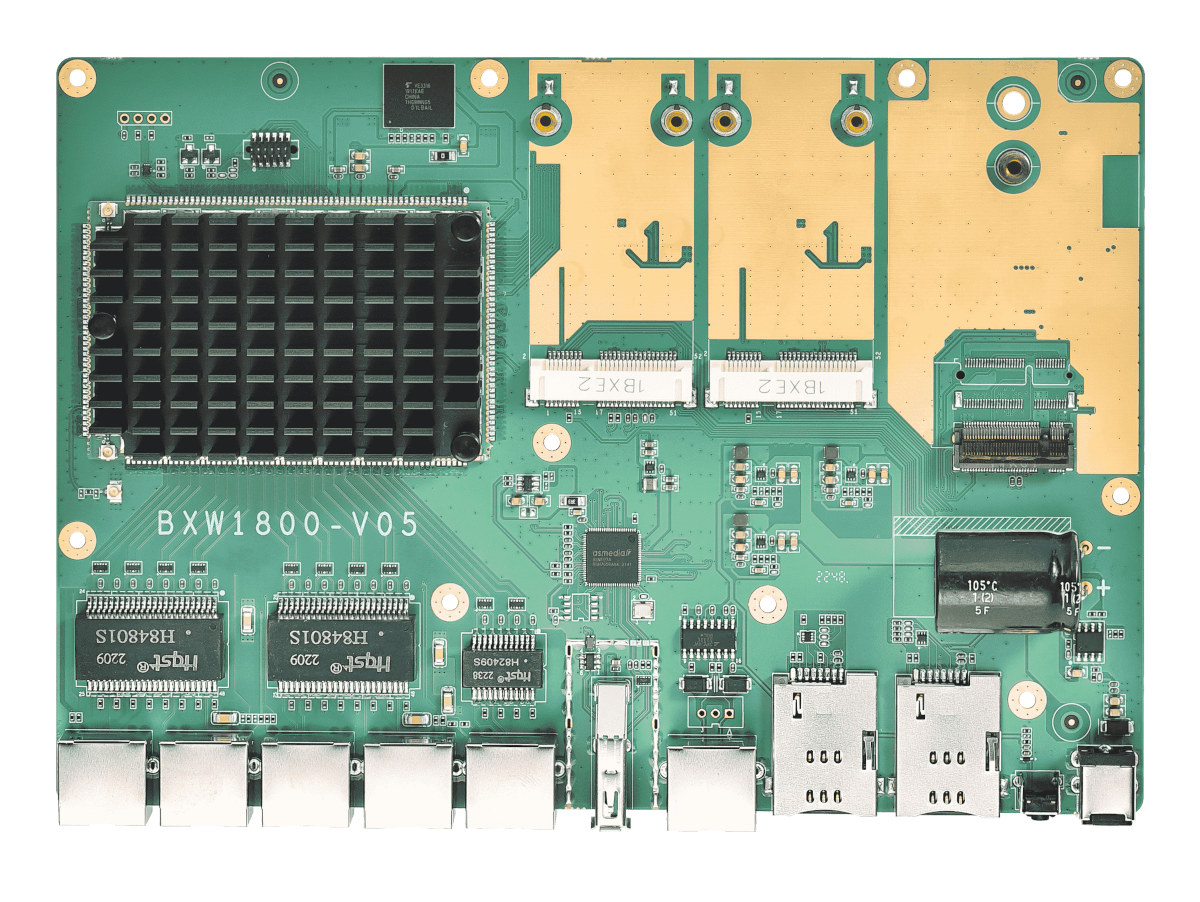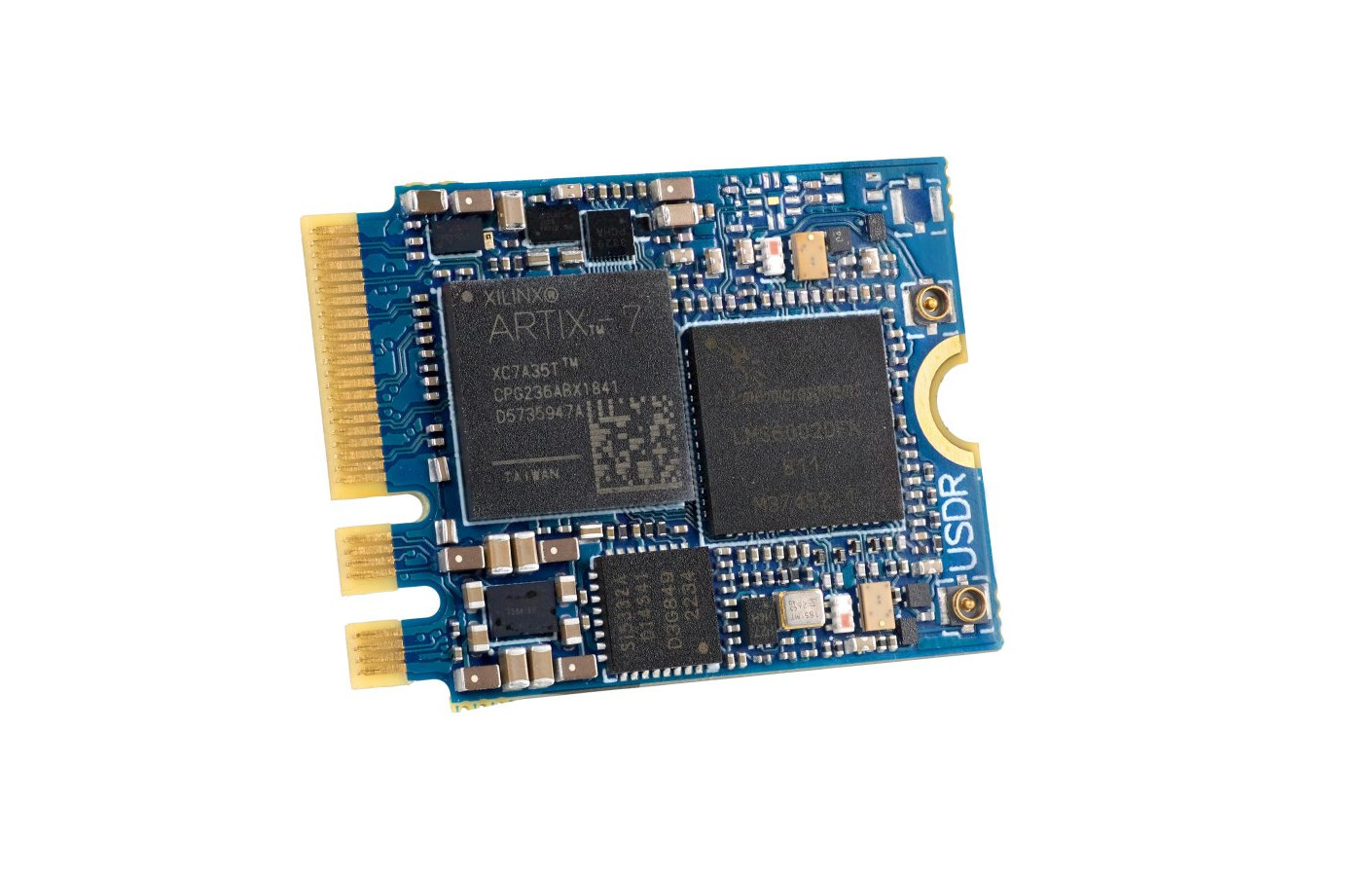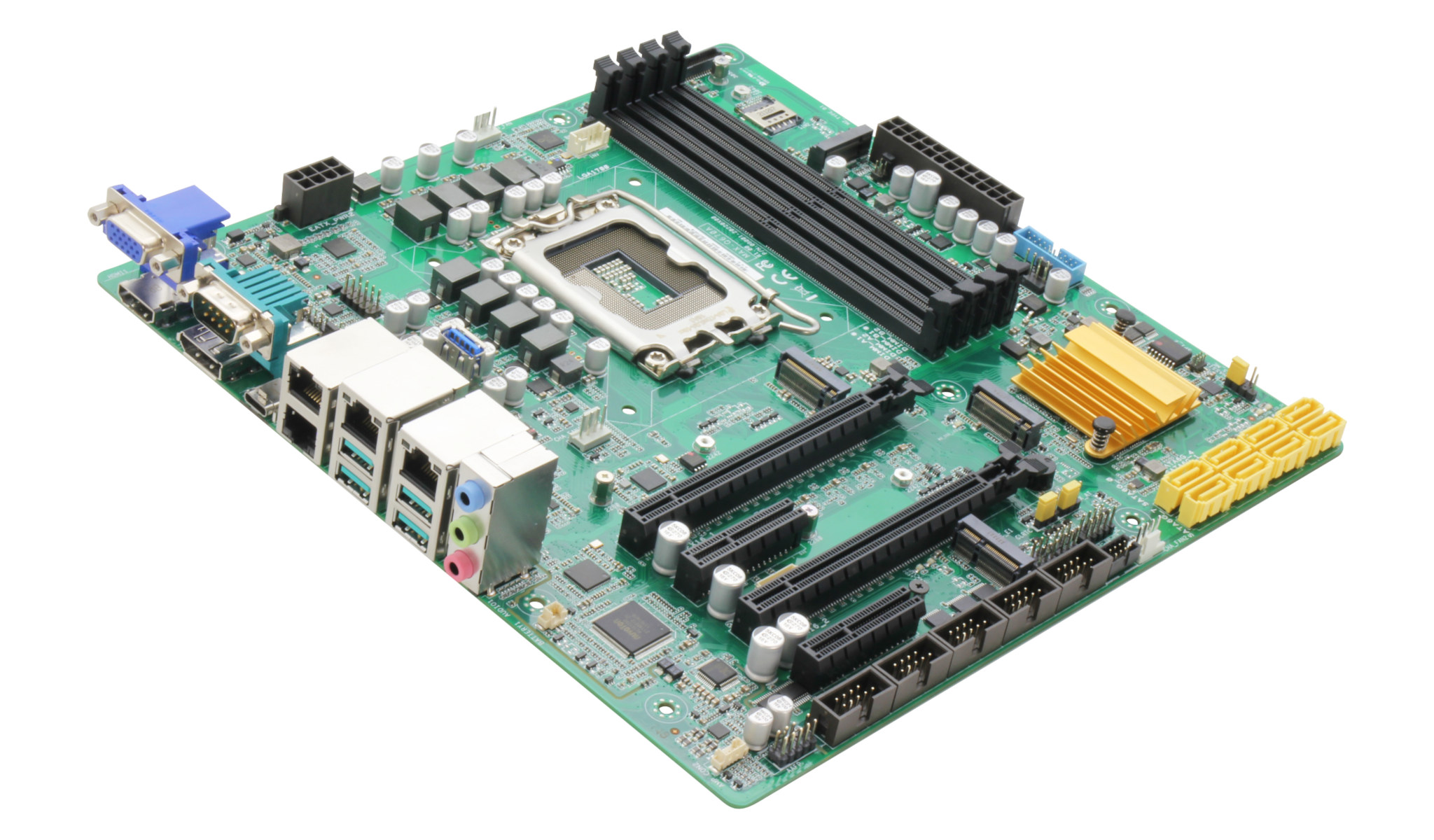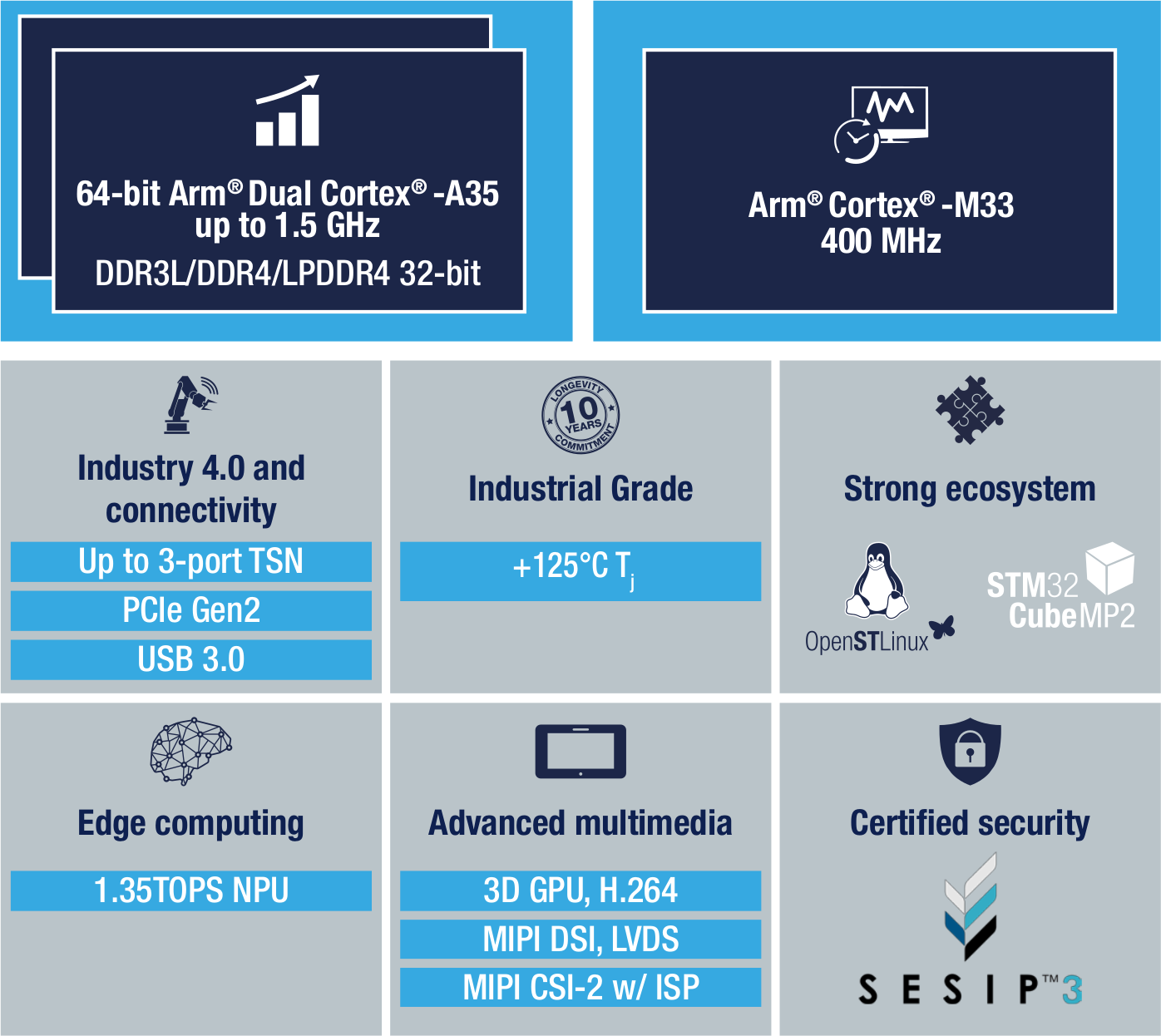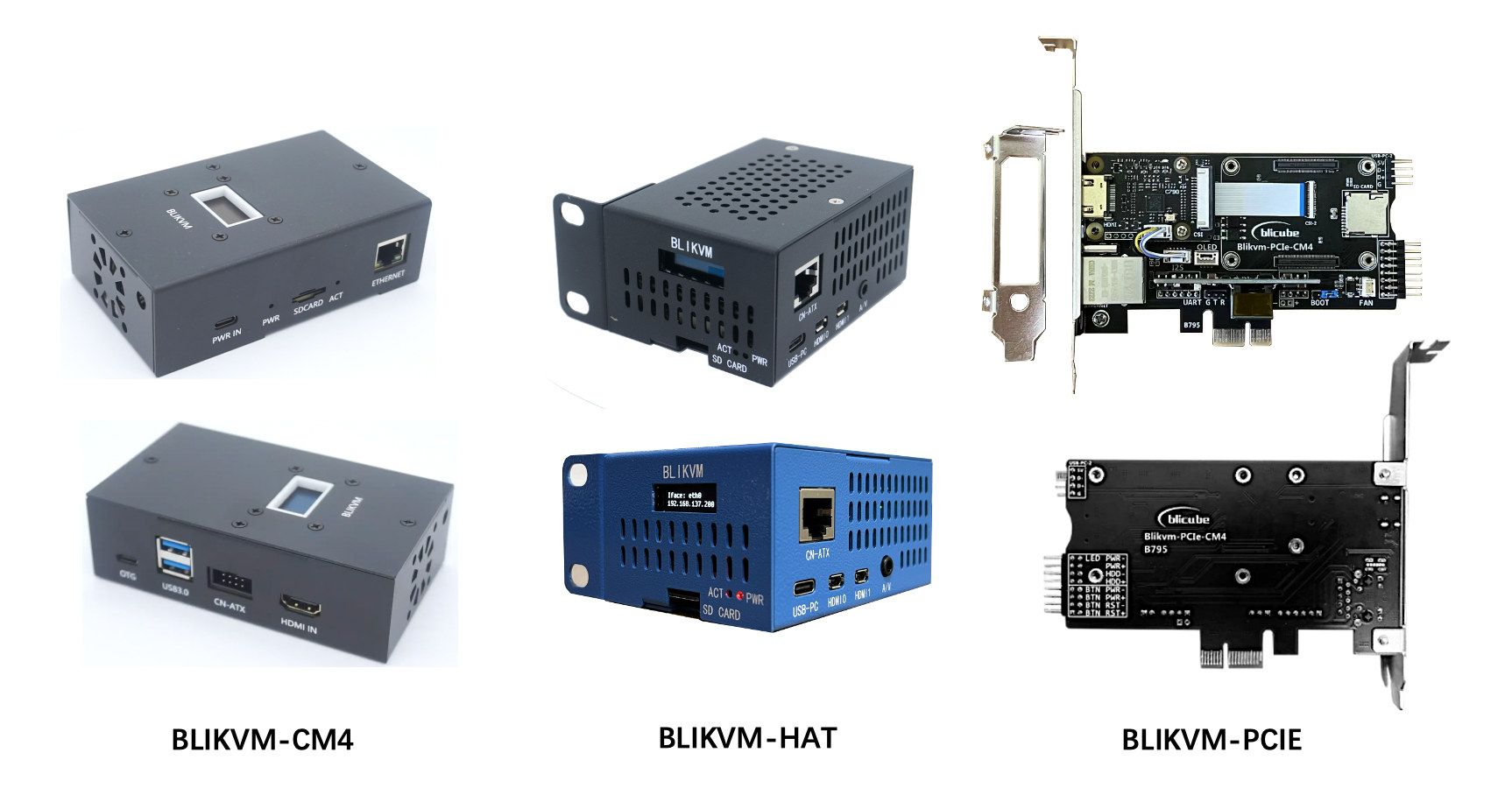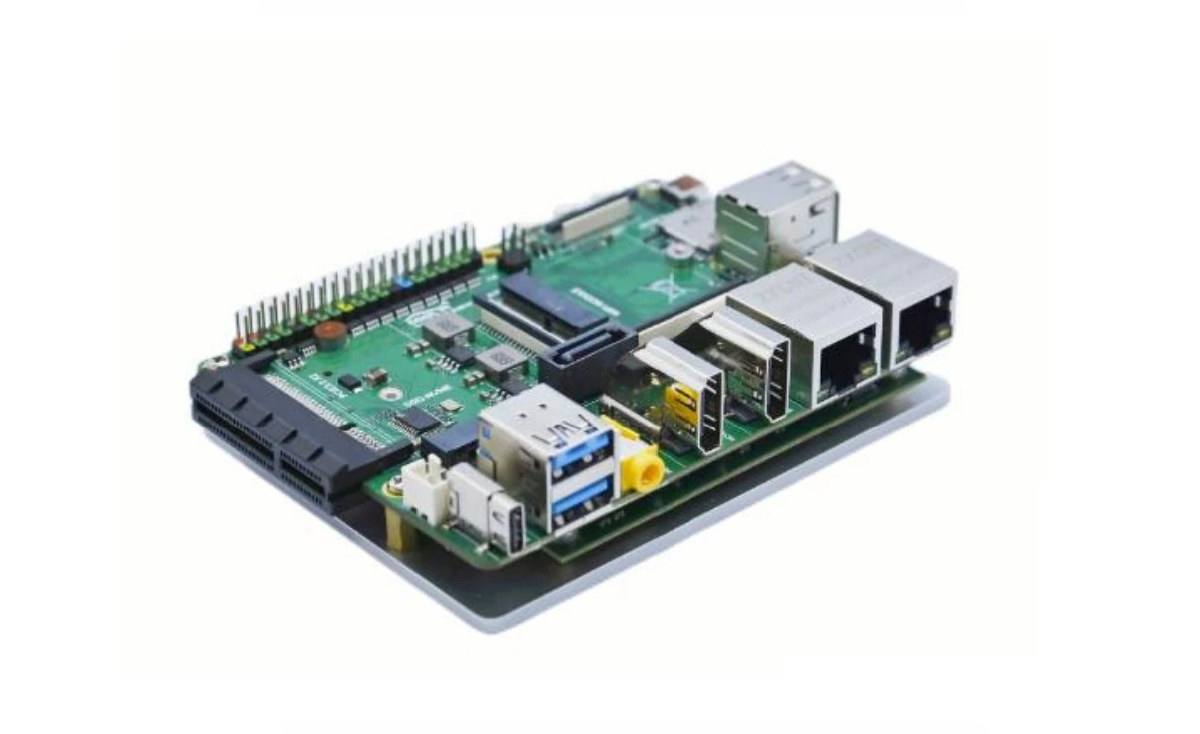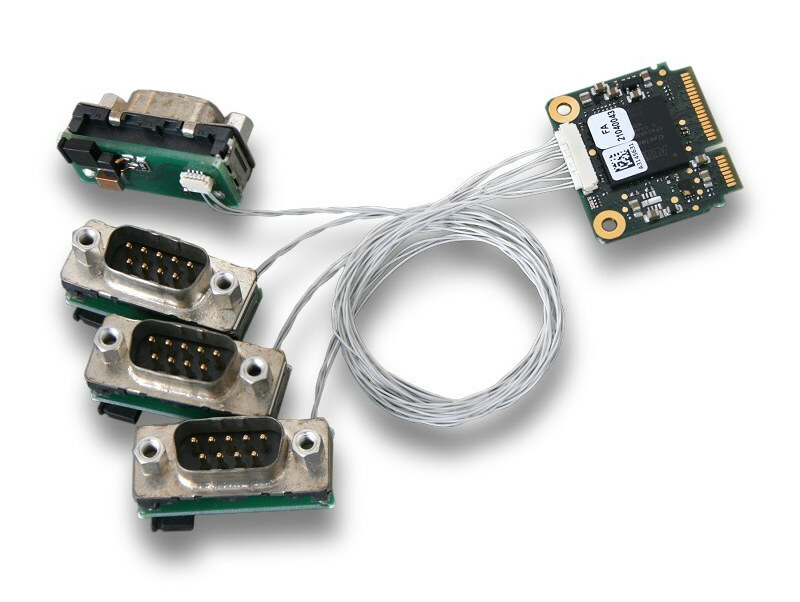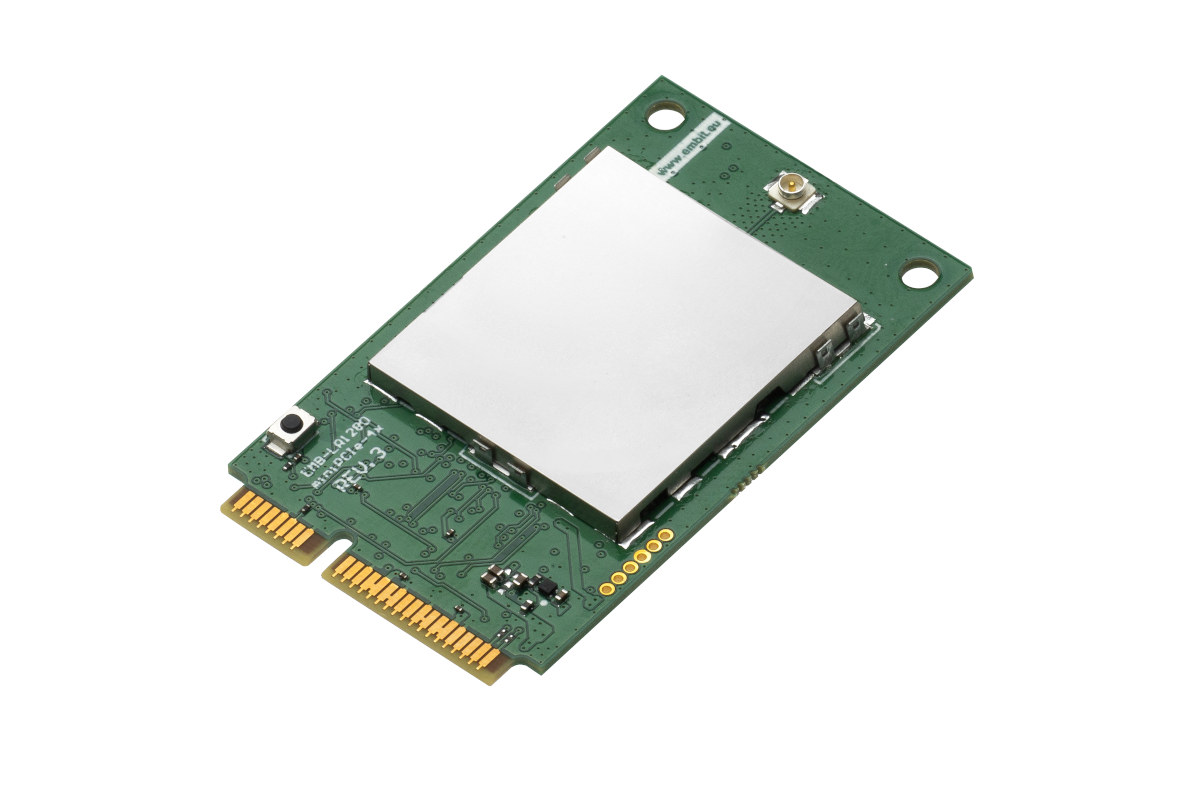bitswrt NHX53X2 is a WiFi 7 system-on-module (SoC) powered by a Qualcomm IPQ5332 quad-core Cortex-A53 SoC and equipped with the QCN6274 commercial grade WiFi 7 chipset. The IPQ5332 processor looks to be the little brother of the IPQ9574 quad-core Arm Cortex-A73 processor found in the AL02 WiFi 7 reference router board from Qualcomm. The module comes with up to 3GB RAM, 1GB NAND flash, and exposes plenty of I/Os with multiple 2.5GbE interfaces, 10GbE, PCIe Gen 3.0, USB 3.0, GPIOs, and more. bitswrt NHX53X2-V01 specifications: SoC – Qualcomm IPQ5332 quad-core Arm Cortex-A53 at 1.5 GHz WiFi 7 chipset – Qualcomm QCN6274 NPU – 12-threaded network processing unit (NPU) Ubi32 @ 1.5 GHz (likely part of Qualcomm IPQ5332, but public info is sparse) System Memory – 1GB (option up to 3GB) 16/32-bit DDR4 at 2133 MT/s Storage – 8MB NOR flash, 128MB (option up to 1GB) NAND flash, 128Kbit EEPROM WLAN […]
uSDR – A tiny M.2 SDR board controllable from your web browser (Crowdfunding)
uSDR is an embedded software-defined radio (SDR) M.2 board based on an AMD Embedded Artix-7 FPGA and designed to be controlled in the Chrome, Opera, or Edge browser without specific drivers or software thanks to WebUSB technology. The module can be inserted into any compatible host, or through M.2, USB, mini PCIe or PCIe adapters, and used from a web browser with ready-to-use applications such as a spectrum monitor or a signal analyzer, or your own JavaScript, C/C++, Rust, Go, or C# application thanks to WebAssembly and the Emscripten project. uSDR specifications: RFIC – Lime Microsystems LMS6002D programmable RF (FPRF) transceiver IC operates from 300MHz to 3.8GHz FPGA – AMD Embedded XC7A35T (Artix-7) FPGA with 33,280 logic cells Full-duplex TX & RX Frequency range – 300 – 3700 MHz (usable range typically starts from 230 MHz) RX/TX Bandwidth – 0.75 – 28 MHz plus bypass mode Clock generator – SI5332A […]
Micro-ATX motherboard takes socketed Raptor Lake CPUs, offers PCIe Gen 5 slots, 2.5GbE, up to 8x SATA ports…
AAEON MAX-Q670A is an industrial micro-ATX motherboard that accepts socketed 13th Gen Intel Core Raptor Lake processors, supports up to 128GB DDR5, offers eight SATA ports with RAID 0/1/5/10, up to four Ethernet ports (GbE and 2.5GbE), and two 16-lane PCIe Gen 5 slots. Other features include five display interfaces with HDMI, DisplayPort, VGA, LVDS, and eDP, four bootable USB 3.2 Gen 2 Type-A ports, an RS232/RS422/RS485 COM port, and plenty of internals headers for more serial and USB ports, as well as M.2 expansion sockets and a digital I/O port AAEON MAX-Q670A specifications: SoC – 12th/13th Generation Intel Core LGA1700 Socket processors (Alder Lake or Raptor Lake) with up to 125W TDP Chipset – Intel Q670 Express Chipset I/O Chipset – NCT6126D System Memory – Up to 128GB via 4x DIMM slots for DDR5 4,000MHz non-ECC, un-buffered memory Storage 8x SATA III ports with support for RAID 0, 1, […]
STMicro unveils STM32MP2 Arm Cortex-A35/M33 MPU family starting with STM32MP25
STMicro has introduced its second generation of its STM32 MPUs (microprocessors) with the STM32MP2 moving to a 64-bit Arm architecture with Edge AI acceleration, multimedia features, graphics processing, and digital connectivity targeting industrial and IoT edge applications. The new family follows the STM32MP1 Arm Cortex-A7/M4 series introduced in 2019, and the first member of the family is the STM32MP25 with up to two 1.5 GHz Cortex-A35 cores coupled with an Arm Cortex-M33 real-time core clocked at 400 MHz, a 3D GPU, and a 1.35 TOPS NPU for AI acceleration. STM32MP25 key features and specifications: CPU – Single or dual Arm Cortex-A35 cores running up to 1.5 GHz Real-time MCU – Arm Cortex-M33 core running up to 400 MHz GPU – Unnamed 3D GPU for “advanced HMI” with support for the Vulkan API VPU – H.264 hardware video decoder and encoder AI accelerator – 1.35 TOPS NPU (Neural processing unit) System […]
BLIKVM open-source KVM over IP works with Raspberry Pi CM4, Raspberry Pi HAT, PCIe card, and soon Allwinner H616
BLIKVM is an open-source KVM over IP software that helps you manage servers or workstations remotely regardless of the health of the target system, and currently working with Raspberry Pi CM4 hardware, a Raspberry Pi HAT, or a PCIe board, and a new model based on MangoPi’s Allwinner H616 CPU module is coming soon. We’ve previously written about the Raspberry Pi-based PiKVM DIY project, followed by the PiKVM v3 Raspberry Pi HAT from the same project, and now I can see there’s a CM4-based PiKVM V4 that was on Kickstarter last month and raised over $800,000… You’d think this kind of system would be rather a niche market, but there’s even demand to have a similar open-source project called BLIKVM offering many of the same features since it’s based on PiKVM, except for the option to use a PCIE card fitted with a CM4 module. Highlights of the BLIKVM project: […]
Cool Pi CM5 evaluation board features Rockchip RK3588/RK3588J system-on-module
Cool Pi CM5 is a system-on-module based on Rockchip RK3588 or RK3588J (industrial temperature range) octa-core Arm Cortex-A76/A55 processor with up to 32GB RAM, 256GB eMMC flash, offered with a development board with dual GbE, two 8K HDMI 2.1 ports, a PCIe 3.0 x2 slot, M.2 NVMe and SATA storage, and more… At the end of last year, we wrote about the Cool Pi 4 as a much faster alternative to Raspberry Pi 4 SBC, and the company has now launched a Raspberry Pi Compute Module 4 and Radxa CM5 alternative with the Cool Pi CM5 MXM 3.0 system-on-module that they offer along with a feature-rich evaluation board (EVB). Cool Pi CM5 EVB specifications: System-on-Module SoC – Rockchip RK3588(J) octa-core processor with 4x Cortex‑A76 cores @ up to 2.4GHz, 4x Cortex‑A55 core @ 1.8GHz Arm Mali-G610 MP4 “Odin” GPU Video decoder – 8Kp60 H.265, VP9, AVS2, 8Kp30 H.264 AVC/MVC, 4Kp60 […]
Half-size mini PCIe card adds up to 4 CAN FD interfaces to embedded systems
esd electronics CAN-PCIeMiniHS/402 is a half-size mini PCIe card with four CAN FD Interfaces designed for embedded systems with one model adding extended temperature range support from -40C to 85°C. The company also introduced the CAN-Mini/402-4-DSUB9-150mm adapter to more easily connect the four CAN network interfaces via DSUB9 connectors. It comes with four individual small adapter boards, each equipped with a DSUB9 plug and a jumper for selectable onboard CAN termination, as well as 150 mm long wires. CAN-PCIeMiniHS/402 highlights: 4x CAN FD interfaces according to ISO 11898-2, no galvanic isolation, bit rates from 10 Kbit/s up to 8 Mbit/s Bus mastering and local data management by FPGA (Intel Cyclone IV EP4CGX) PCIe Mini interface according to Mini Card Electromechanical Spec. R1.2 Supports MSI (Message Signaled Interrupts) HW-Timestamp capable Dimensions – 30 mm x 27 mm (Half-size mini PCIe form factor) Temperature Range Standard – 0°C … +75°C Extended range: […]
Embit EMB-LR1280-mPCIe-4x is a 2.4GHz LoRa mPCIe module based on Semtech SX1280 chipset
Embit EMB-LR1280-mPCIe-4x is an mPCIe (mini PCIe) module based on four Semtech SX1280 2.4 GHz LoRa transceivers and designed for OEM gateways that can work worldwide thanks to the use of the 2.4GHz ISM band and supports ranging. We first covered 2.4GHz LoRa and the SX1280 transceiver two years ago as a solution to design region-independent products specially suited to maritime and intercontinental logistics applications. We haven’t seen it used that much although we covered an ESP32 board with SX1280 last year, and it turns out that Italian company Embit has also made a mPCIe module based on the SX1280 chipset. Embit EMB-LR1280-mPCIe-4x specifications: LoRa connectivity Chipsets – 4x Semtech SX1280 transceiver with 3x LoRa Rx Channels + 1x LoRa Tx Modulation – LoRa Spread Spectrum Frequency – 2.4 GHz ISM band Frequency Range – 2400 to 2500 MHz RF Output power – Up to +12 dBm Sensitivity -129 dBm […]


